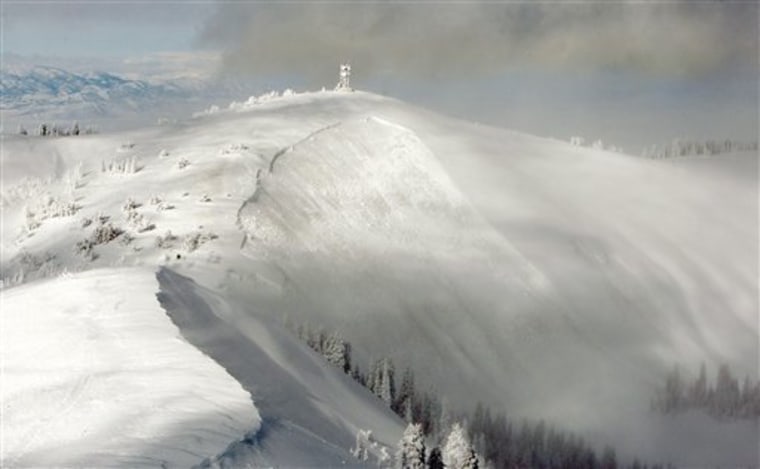The stage was set for avalanches that have killed 19 people in western North America in two weeks by fall weather that created slick, unstable, icy slabs on mountains across the region, avalanche experts say.
Snow that fell in October and November provided an unstable base for heavy snows that fell across the West in December. Occasional rain and changing weather conditions provided additional layers that have made it easier for huge walls of snow to cleave off and plummet down the mountain.
"There's something very tricky and very weird about the snow conditions this year that obviously caught some of the best snow-safety teams in the U.S. off guard," Doug Abromeit, director of the U.S. Forest Service's National Avalanche Center in Ketchum, Idaho, said Wednesday.
All 19 have died since Dec. 14. The worst was Sunday when 11 snowmobilers were swept away in back-to-back avalanches in British Columbia's backcountry. Eight were killed.
In Utah, three snowmobilers and a skier have been killed. Colorado has also had four deaths: a skier, a snowboarder and two on snowmobiles. Others have died in Wyoming, Washington state and California.
28 close calls in Colo.
Dozens of other people have had close calls — 28 in Colorado alone.
On average about 25 people in the U.S. die in avalanches each winter, according to the Colorado Avalanche Information Center in Boulder.
Some of the slides were large — one near Logan, Utah, that killed two snowmobilers was estimated to be 2,000 feet wide — but many weren't.
"It's more the frequency that's unusual as opposed to the size," said John Snook, an avalanche forecaster with the Colorado center.
Avalanche experts have been flummoxed at times by what they've seen this winter and have issued warning after warning about the dangers of venturing onto steep, snow-covered mountainsides.
The snow that fell in October and November changed as temperatures fluctuated, switching from a cohesive layer to one that is more crystallized and weak. Rain fell in some parts of high-elevation Utah on Thanksgiving, adding another slippery coat. And in December, huge snow dumps — 300 percent of average in some parts of Colorado — added heavy loads to those unstable underlying layers.
Unknown territory
Conditions are dangerous but it's also difficult to predict exactly when and where avalanches will occur.
"Pretty much all of the avalanche professionals I've talked to have said, 'Man, I don't know if I've seen this before,'" said Bruce Tremper, director of the Utah Avalanche Center.
Danger remains high or extreme in parts of many mountainous areas throughout the West.
Extreme conditions are expected in the Cascade Range from Washington state's Mount Rainier to central Oregon because of weak snow, high winds and new snow on the way.
Avalanche experts have been urging people to steer clear of dangerous areas. Those who do go into the backcountry should consult with avalanche centers first and be prepared with proper avalanche equipment, including beacons and shovels.
No one is sure how long the danger will last. The slick slab from the fall snowstorms may or may not stick around until spring.
"It all depends on what the weather does," Abromeit said.
